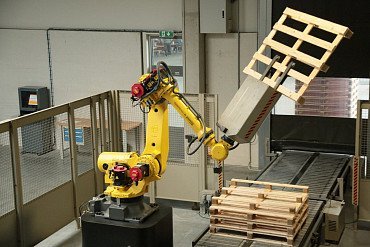Euro Emission Standards
We guarantee that all our trucks meet the Euro VI emissions standard. What exactly is enshrined in this standard? Read the following article and find out.
As you already know from the previous article about Eurolicences, our company, besides producing pallets, operates truck transport, which we use both for dispatching our products and for external orders. There are several requirements for the operation of such a service, which must be met in order for our vehicles to even set out on their journeys. One of the basic conditions is compliance with the Euro emission standards.
Origin of Euro emission standards
The Euro emission standards are, as the name suggests, linked to the European Union. It set limits on the exhaust pollutants (carbon monoxide, hydrocarbons, nitrogen oxides, and solid particles) of both petrol and diesel engines for motor vehicles, taking into account the mass of pollutants in relation to the distance travelled. The aim of the standard is to put pressure on manufacturers to develop increasingly “cleaner” vehicles.
The first emission standard — Euro 1 — was approved in 1992, and over time it has been gradually tightened and supplemented, changing its numerical designation. Today, the Euro 6 standard is established for newly manufactured motor vehicles, with cars and light commercial vehicles numbered in Arabic numerals, while for trucks and buses we have the Roman numeral VI.
Parameters of the Euro 6/VI standard
The Euro 6/VI standard has been valid since the beginning of 2015. It requires all smaller vehicles to include a special nitrogen oxide filter, and for trucks or buses it requires the installation of a special reservoir for additional liquid. Our vehicles have an AdBlue reservoir which is topped up at regular intervals and which, in combination with the Selective Catalytic Reduction (SCR) process, helps to remove nitrogen oxide emissions.
The course of testing compliance with the standard
Tests were conducted for many years according to the “New European Driving Cycle” (NEDC). This included a series of tests to measure the emissions of harmful substances from engines at different stages of deceleration or acceleration. However, the results of this testing were questioned, as they probably did not give a real picture of the emitted fumes. In 2017, the NEDC method was replaced in light passenger and commercial vehicles by the more accurate WLTP (Worldwide Harmonised Light Vehicles Test Procedure).
In any case, we are just a few steps away from the launch of a new level of the standard – Euro 7/VII. It promises, among other things, to introduce an even better way to measure emissions, in which measurements in the laboratory are combined with additional tests directly on the road. This will bring more realistic results, but also at the same time much higher costs for vehicle manufacturers.
Overview of EURO emission standards
| Emission standard | Year of manufacture |
|---|---|
|
EURO 1 |
1992 |
|
EURO 2 |
1996 |
|
EURO 3 |
2000 |
|
EURO 4 |
2005 |
|
EURO 5 |
2009 |
|
EURO 6 |
2014 |
|
EURO 6C |
2018 |

